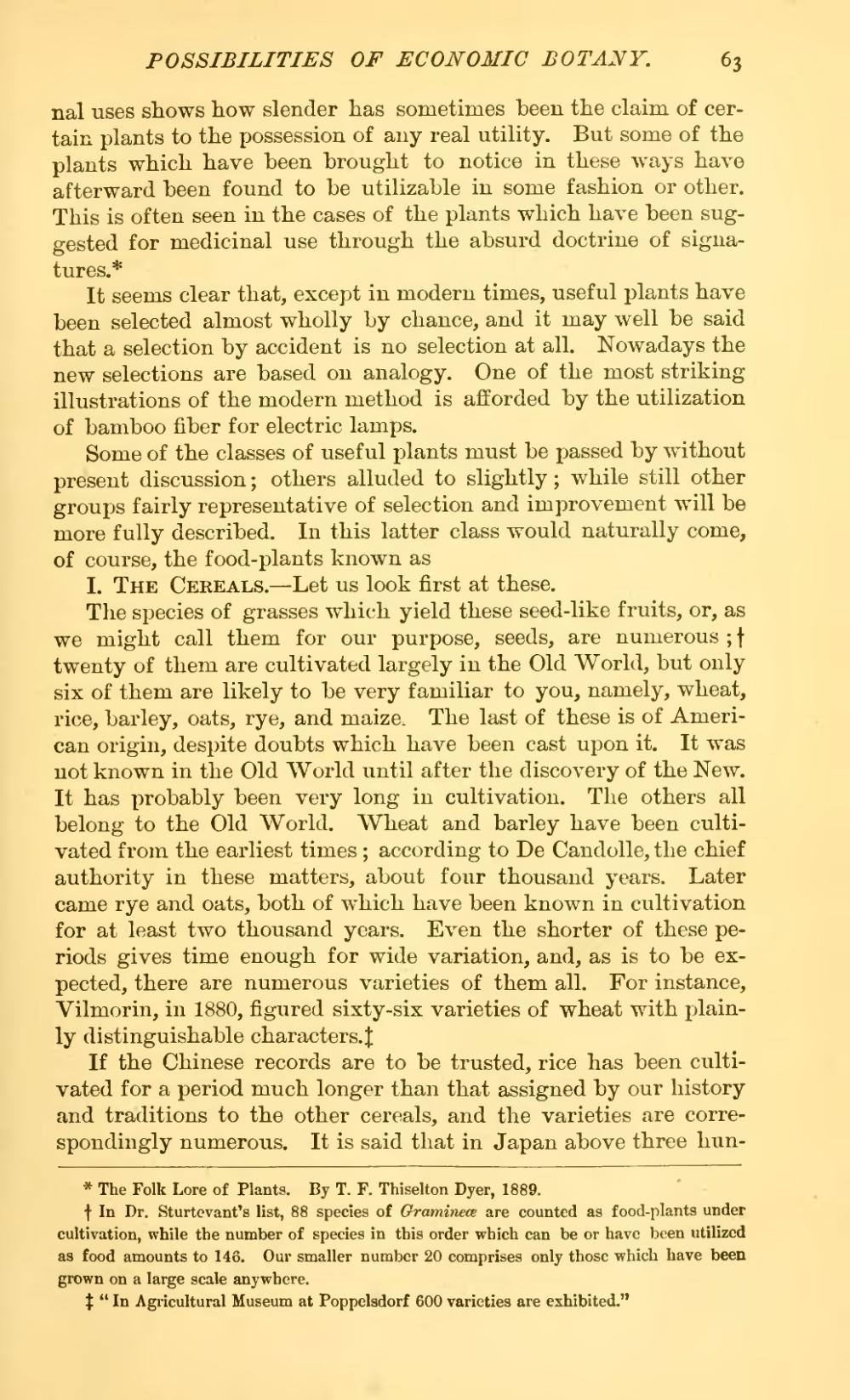nal uses shows how slender has sometimes "been the claim of certain plants to the possession of any real utility. But some of the plants which have been brought to notice in these ways have afterward been found to be utilizable in some fashion or other. This is often seen in the cases of the plants which have been suggested for medicinal use through the absurd doctrine of signatures.[1]
It seems clear that, except in modern times, useful plants have been selected almost wholly by chance, and it may well be said that a selection by accident is no selection at all. Nowadays the new selections are based on analogy. One of the most striking illustrations of the modern method is afforded by the utilization of bamboo fiber for electric lamps.
Some of the classes of useful plants must be passed by without present discussion; others alluded to slightly; while still other groups fairly representative of selection and improvement will be more fully described. In this latter class would naturally come, of course, the food-plants known as
I. The Cereals.—Let us look first at these.
The species of grasses which yield these seed-like fruits, or, as we might call them for our purpose, seeds, are numerous;[2] twenty of them are cultivated largely in the Old World, but only six of them are likely to be very familiar to you, namely, wheat, rice, barley, oats, rye, and maize. The last of these is of American origin, despite doubts which have been cast upon it. It was not known in the Old World until after the discovery of the New. It has probably been very long in cultivation. The others all belong to the Old World. Wheat and barley have been cultivated from the earliest times; according to De Candolle, the chief authority in these matters, about four thousand years. Later came rye and oats, both of which have been known in cultivation for at least two thousand years. Even the shorter of these periods gives time enough for wide variation, and, as is to be expected, there are numerous varieties of them all. For instance, Vilmorin, in 1880, figured sixty-six varieties of wheat with plainly distinguishable characters.[3]
If the Chinese records are to be trusted, rice has been cultivated for a period much longer than that assigned by our history and traditions to the other cereals, and the varieties are correspondingly numerous. It is said that in Japan above three hun-
- ↑ The Folk Lore of Plants. By T. F. Thiselton Dyer, 1889.
- ↑ In Dr. Sturtevant's list, 88 species of Gramineæ are counted as food-plants under cultivation, while the number of species in this order which can be or have been utilized as food amounts to 146. Our smaller number 20 comprises only those which have been grown on a large scale anywhere.
- ↑ "In Agricultural Museum at Poppelsdorf 600 varieties are exhibited."
